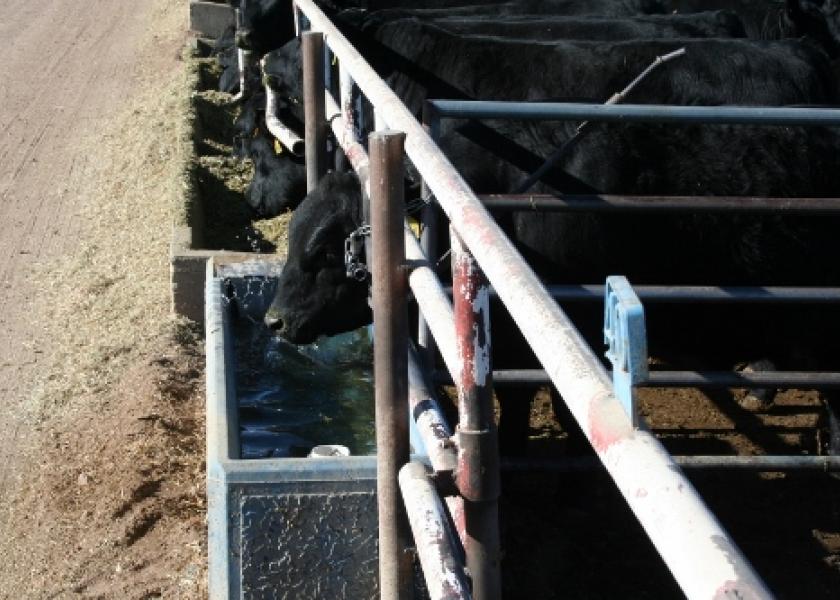USDA Clarifies Cattle Categories in CFAP Program

There have been a lot of questions about where specific groups of cattle fit into the categories outlined in the Coronavirus Food Assistance Program. USDA released some clarification as to where cattle fit in each category.
Check out this helpful chart from USDA:
|
Common Name |
Description |
CFAP Category |
|
Newborn Calf |
Calves from birth to days old |
Feeder Cattle: < 600 lbs |
|
Calf |
Calves still nursing the cow, animals that generally weigh less than 500 pounds |
Feeder Cattle: < 600 lbs |
|
Bucket Calf |
Orphan or newborn calf normally purchased when they are 1 to 10 days old |
Feeder Cattle: < 600 lbs |
|
Heiferette |
A female bovine animal that has not calved and weighs more than 500 pounds; OR a heifer placed on feed following the loss of a calf or an open heifer placed on feed following the breeding season |
Feeder Cattle: < or > 600 lbs, as applicable |
|
Steer |
A castrated male bovine animal that generally weighs more than 500 pounds |
Feeder Cattle: < or > 600 lbs, as applicable |
|
Weaner or Weaned Calf |
Animal between 105 and 355 days coming from cow-calf |
Feeder Cattle: < or > 600 lbs, as applicable |
|
Backgrounded Cattle |
Steers and heifers that are fed a warm up or conditioning ration are normally fed to approximately 700 pounds, and then sold as feeders or shipped to another feedlot to be finished for the slaughter market |
Feeder Cattle: < or > 600 lbs, as applicable |
|
Stockers/Feeders/Feeder Calves |
Young weaned steers or heifers, weighing approximately 400-800 pounds usually grazing on pasture and/or feed ration to prepare for shipment to feeders intended for slaughter or selected for replacement stock |
Feeder Cattle: < or > 600 lbs, as applicable |
|
Yearlings |
Calves between 1 and 2 years of age |
Feeder Cattle > 600 lbs |
|
Open Heifer |
Non-pregnant female bovine |
Feeder Cattle: < or > 600 lbs, as applicable |
|
Replacement Heifers |
A heifer that has been selected to be bred and placed in the beef herd |
All Other Cattle |
|
Bred Heifers |
A female bovine that is pregnant with her first calf |
All Other Cattle |
|
First Calf Heifers |
A young female that has had only one calf |
All Other Cattle |
|
Bred Cows |
A female bovine animal that has borne at least one calf |
All Other Cattle |
|
Open Cows - Retained in Herd |
(Non-pregnant) cows at the end of the breeding season |
All Other Cattle |
|
Open Cows - Slaughter |
(Non-pregnant) cows at the end of the breeding season |
Slaughter Cattle: Mature |
|
Cows-Culled (Beef and Dairy) |
A cow that is removed from the main breeding herd or dairy production for one or more reasons (i.e., age, poor production, physical ailment, poor disposition, genetic selection, etc.) and is generally sold for slaughter and not destined to be a replacement |
Slaughter Cattle: Mature |
|
Herd Bulls-Culled (Beef and Dairy) |
A mature (approximately 24 months of age or older) uncastrated, male bovine removed from the main breeding herd sold for slaughter and not destined to be replacement |
Slaughter Cattle: Mature |
|
Herd Bulls (Breeding-Beef only) |
A mature (approximately 24 months of age or older) uncastrated, male bovine used for breeding purposes |
All Other Cattle |
|
Finished Cattle (1200 lbs or more) |
Cattle that have reached the optimal weight and conditions ready for slaughter |
Slaughter Cattle: Fed |
|
Fat Steer/Heifer (1200 lbs or more) |
Cattle that have reached the optimal weight and conditions ready for slaughter |
Slaughter Cattle: Fed |
To see answers to frequently asked questions about CFAP related to the dairy industry, visit: www.milkbusiness.com/CFAP.







